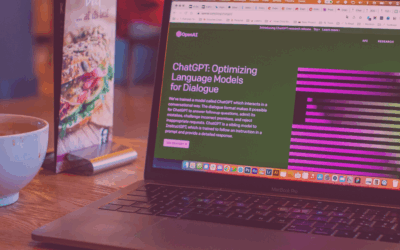Introduction to Marketing Communication Planning
What is Marketing Communication Planning?
Marketing communication planning is the process of strategically developing and implementing communication activities that align with a brand’s objectives. This involves creating a structured approach to ensure that all marketing messages are consistent, targeted, and effective. Through careful planning, companies can deliver the right message to the right audience at the right time, ensuring that their marketing efforts contribute directly to their overall business goals. This planning framework is essential for coordinating various communication channels, including advertising, public relations, social media, and direct marketing, to work together seamlessly and efficiently.
Importance and Benefits of a Communication Planning Framework
A communication planning framework is crucial for any successful marketing strategy. It provides a clear direction and ensures that every aspect of your marketing communication is aligned with your broader business objectives. By having a structured plan, you can avoid the pitfalls of disjointed messaging and wasted resources.
Strategic Direction
A well-defined framework offers strategic direction, guiding your marketing efforts towards specific, measurable goals. This direction ensures that all communication activities support the brand’s mission and objectives, leading to more focused and effective campaigns.
Resource Allocation
Effective planning allows for better resource allocation. By knowing what needs to be done and when, you can allocate your budget, time, and manpower more efficiently, avoiding unnecessary expenditures and maximizing the impact of your marketing efforts.
Measurable Marketing Objectives
A communication planning framework helps set clear, measurable marketing objectives. These objectives provide benchmarks for success, making it easier to track progress and adjust strategies as needed to achieve the desired outcomes.
Improved ROI
With a clear plan in place, your marketing efforts are more likely to yield a higher return on investment (ROI). By focusing on targeted and well-executed campaigns, you can achieve better results with fewer resources.
Customer Understanding and Engagement
A structured approach to communication planning enables you to better understand and engage with your target audience. By aligning your messaging with customer needs and preferences, you can build stronger relationships and increase customer loyalty.
Enhanced Team Collaboration
Having a clear framework fosters better collaboration among your marketing team. Everyone knows their role and how their efforts contribute to the overall strategy, leading to more cohesive and efficient teamwork.
Increased Efficiency
Efficiency is another key benefit of a communication planning framework. By streamlining processes and eliminating unnecessary tasks, you can execute your marketing campaigns more effectively and in a timely manner.
Brand Building
Finally, a communication planning framework plays a vital role in brand building. Consistent, well-coordinated messaging across all channels strengthens your brand identity and helps establish a positive reputation in the market.
Step-by-Step Guide to Building Your Framework
Analyze the Current Situation
The first step in building a marketing communication planning framework is to thoroughly analyze your current situation. This involves understanding where your brand stands in the market, identifying your strengths and weaknesses, and recognizing the opportunities and threats that exist. Begin by assessing your current communication efforts—what’s working, what’s not, and where there are gaps. This analysis should include a review of your competitors, industry trends, and the overall market environment. By understanding your current position, you can make informed decisions about where to focus your efforts and how to improve your communication strategies.
Define Key Objectives and SMART Goals
Once you’ve analyzed your current situation, the next step is to define your key objectives. These objectives should align with your overall business goals and guide your marketing communication efforts. To ensure your objectives are effective, they should be SMART: Specific, Measurable, Achievable, Relevant, and Time-bound. For example, instead of setting a vague goal like “increase brand awareness,” you might define a SMART goal such as “increase brand awareness by 20% among our target audience within six months.” Setting clear, focused objectives helps you measure success and make adjustments as needed, ensuring that your communication efforts are both strategic and impactful.
Identify and Research Your Target Audience
Identifying and researching your target audience is a critical step in developing an effective marketing communication plan. Understanding who your audience is, what they value, and how they interact with your brand allows you to tailor your messages to resonate more deeply with them. Start by segmenting your audience based on demographics, psychographics, behavior, and needs. Then, conduct thorough research to gain insights into their preferences, pain points, and communication habits. This research can involve surveys, interviews, focus groups, and analyzing existing data. The more you know about your target audience, the better you can craft messages that engage them and drive desired actions.
Craft Key Messages
Crafting key messages is the next step in your marketing communication planning framework. Your key messages are the core ideas you want to convey to your audience. They should be clear, consistent, and aligned with your brand’s values and objectives. These messages need to resonate with your target audience, addressing their needs and concerns while highlighting the benefits of your products or services.
When crafting key messages, consider the tone and style that best suits your audience. Are they looking for professional, straightforward information, or do they respond better to a more casual, conversational tone? Tailoring your message style to match your audience’s preferences will increase the impact and effectiveness of your communication.
Your key messages should also be flexible enough to be adapted across different channels and formats, ensuring consistency in your communication while allowing for variations that suit specific platforms. The goal is to create messages that not only inform but also inspire action, whether it’s making a purchase, subscribing to a service, or engaging with your brand in other meaningful ways.
Develop Communication Strategies and Channel Selection
Developing your communication strategies and selecting the appropriate channels are crucial steps in executing your marketing communication plan. Your communication strategy outlines how you will deliver your key messages to your target audience, while channel selection determines where these messages will be conveyed.
Begin by considering the nature of your key messages and the preferences of your target audience. Different audiences prefer different channels—some might engage more on social media, while others respond better to email marketing, blogs, or traditional media. Your strategy should align with these preferences, ensuring that your messages reach your audience where they are most likely to engage.
Next, consider the strengths and weaknesses of each communication channel. For instance, social media is excellent for real-time interaction and broad reach, while email offers a more personalized touch and direct engagement. Traditional media like print or TV might be more effective for certain demographics or for building brand awareness on a larger scale.
Your communication strategies should also include a plan for content creation, timing, and frequency. Determine how often you will communicate with your audience and what type of content will be most effective. Will you use videos, articles, infographics, or a mix of different formats? Timing is also essential; you need to plan when to release your messages to maximize their impact, such as aligning with product launches, seasonal trends, or key dates relevant to your industry.
By carefully developing your communication strategies and selecting the right channels, you ensure that your marketing efforts are targeted, cohesive, and effective, ultimately driving better engagement and results.
Implement and Monitor Your Plan
After developing your communication strategies and selecting the appropriate channels, the next step is to implement your plan. This stage involves putting your strategies into action by creating and distributing content, engaging with your audience, and ensuring that all elements of your plan are executed as intended.
During implementation, it’s important to remain flexible and responsive. Monitor the performance of your communication efforts closely, using analytics tools to track key metrics such as engagement rates, website traffic, conversion rates, and ROI. This real-time monitoring allows you to identify what’s working well and what might need adjustment.
Regularly reviewing these metrics will help you make informed decisions about optimizing your strategies. For example, if certain messages are resonating more than others, you can adjust your content to focus on those successful elements. Similarly, if a particular channel is underperforming, you may need to rethink your approach or reallocate resources to more effective platforms.
Implementation and monitoring should be an ongoing process, with regular assessments to ensure that your communication plan remains aligned with your objectives and continues to deliver the desired results. This approach not only helps you achieve your immediate goals but also builds a foundation for long-term success by continuously refining your communication strategies.
Models and Frameworks for Reference
The RACE Framework
The RACE Framework is a practical model used to plan, manage, and optimize marketing communication strategies. It stands for Reach, Act, Convert, and Engage, each representing a critical phase in the customer journey.
Reach
The Reach phase focuses on building brand awareness and attracting potential customers. This is where your marketing efforts aim to get your brand in front of as many people as possible through various channels like social media, SEO, and paid advertising. The goal is to drive traffic to your website or other digital platforms, setting the stage for further engagement.
Act
In the Act phase, the focus shifts to encouraging interactions with your brand. This could be through actions like clicking on a link, reading a blog post, or signing up for a newsletter. The aim is to engage your audience, turning passive visitors into active participants who are interested in learning more about your products or services.
Convert
The Convert phase is all about turning engagement into action. This is where leads are transformed into customers. Effective communication strategies during this phase might include personalized email campaigns, targeted offers, and streamlined purchasing processes designed to make it easy for the customer to take the final step.
Engage
Finally, the Engage phase focuses on building long-term relationships with customers. This involves ongoing communication to encourage repeat purchases, foster loyalty, and turn satisfied customers into brand advocates. Strategies here might include loyalty programs, personalized follow-ups, and community-building efforts on social media.
Models and Frameworks for Reference
The PASTA Model
The PASTA Model is another useful framework for structuring marketing communication strategies. It stands for Problem Definition, Analysis, Strategy, Target Group, and Action, with each component guiding different aspects of your communication planning.
Problem Definition
The first step in the PASTA Model is defining the problem or challenge that your communication efforts need to address. This could be anything from low brand awareness to poor customer engagement. Clearly identifying the problem sets the foundation for developing a targeted and effective strategy.
Analysis
In the Analysis phase, you delve into understanding the factors contributing to the problem. This involves researching market trends, competitor activities, and customer behavior. By analyzing this data, you gain insights that inform your strategy, helping you to address the problem more effectively.
Strategy
The Strategy phase is where you develop a plan to tackle the problem identified. This involves setting clear objectives, deciding on the messaging, and selecting the channels through which you will communicate. The strategy should align with your overall business goals and be flexible enough to adapt to changing circumstances.
Target Group
Identifying and understanding your target group is crucial for effective communication. This phase involves defining who your audience is and tailoring your messages to meet their needs and preferences. The more precisely you can define your target group, the more effective your communication will be.
Objectives
In the Objectives phase, you set specific, measurable goals that your communication strategy aims to achieve. These objectives should be aligned with your overall strategy and provide clear benchmarks for success, guiding your efforts and allowing for effective measurement and adjustment.
Positioning
Positioning involves deciding how you want your brand or product to be perceived by your target audience. This phase is about crafting a unique value proposition that differentiates your offering from competitors and resonates with your audience, ensuring that your communication reinforces this positioning.
Proposition
Your proposition is the key message or offer that you are communicating to your audience. It should be compelling, clear, and directly address the needs or desires of your target group. A strong proposition is central to persuading your audience to take action.
Tactics
Tactics refer to the specific actions and tools you will use to execute your strategy. This could include content creation, social media campaigns, email marketing, and more. The tactics should be chosen based on their effectiveness in reaching and engaging your target audience.
Action
The final phase, Action, is about implementing your strategy and tactics. This involves coordinating your team, executing the plan, and continuously monitoring the results. The action phase is where your communication efforts come to life, and success is measured against the objectives you set.
Tools and Templates for Effective Planning
Communication Plan Template
A communication plan template is an essential tool for organizing and structuring your marketing communication efforts. This template typically includes sections for outlining your goals, target audience, key messages, chosen channels, and timelines. By using a template, you can ensure that all critical elements of your communication strategy are captured and aligned with your overall business objectives. It also serves as a reference point for your team, helping everyone stay on the same page and maintain consistency throughout the campaign.
Audit Tools for Current Communication Methods
Audit tools are invaluable for evaluating the effectiveness of your current communication methods. These tools allow you to assess how well your existing strategies are performing by analyzing metrics such as audience engagement, message reach, and ROI. By regularly auditing your communication efforts, you can identify areas for improvement, discover what’s working well, and adjust your strategies accordingly. This continuous assessment helps you stay agile and responsive in a constantly changing market environment.
Goal Setting and KPI Tracking Templates
Goal setting and KPI (Key Performance Indicator) tracking templates help you clearly define your marketing objectives and measure your progress toward achieving them. These templates typically include sections for setting SMART goals, identifying relevant KPIs, and tracking performance over time. By using these templates, you can ensure that your communication efforts are focused, measurable, and aligned with your overall strategy. They also make it easier to adjust your tactics as needed to meet your goals more effectively.
Leveraging Technology in Communication Planning
Tools for Planning and Execution
Leveraging technology in your marketing communication planning can significantly enhance efficiency and effectiveness. Tools like project management software (e.g., Asana, Trello) help streamline the planning process by allowing teams to collaborate, set deadlines, and track progress in real-time. These tools ensure that everyone involved in the communication process is aligned and that tasks are completed on time.
For execution, marketing automation platforms like HubSpot or Marketo can be invaluable. These tools enable you to automate repetitive tasks, such as sending emails, posting on social media, and managing customer interactions. Automation not only saves time but also ensures that your communication is consistent and timely, reaching your audience at the optimal moments.
Analytics and Reporting Tools (e.g., Looker Studio)
Analytics and reporting tools are crucial for measuring the success of your communication efforts. Looker Studio, for instance, allows you to create custom dashboards that provide real-time insights into your campaign performance. By tracking metrics such as engagement rates, conversion rates, and customer feedback, you can assess the effectiveness of your strategies and make data-driven decisions.
These tools also enable you to generate detailed reports that can be shared with stakeholders, helping to demonstrate the value of your communication efforts and guide future planning. The ability to quickly analyze and report on your marketing activities ensures that you stay agile and can continuously improve your communication strategies.
Common Pitfalls and How to Avoid Them
Misalignment with Business Goals
One of the most common pitfalls in marketing communication planning is misalignment with overall business goals. When communication strategies are developed in isolation from broader company objectives, they can lead to wasted resources and missed opportunities. To avoid this, always ensure that your communication plan is directly tied to the company’s strategic goals. Regularly review and adjust your communication efforts to ensure they continue to support the larger business strategy.
Lack of Audience Research
Another significant pitfall is neglecting to thoroughly research your target audience. Without a deep understanding of who your audience is, what they need, and how they prefer to receive information, your messages may fail to resonate. To avoid this, invest time in audience research, including demographics, behavior, and preferences. This research will enable you to tailor your messages effectively, increasing the likelihood of engagement and success.
Inconsistent Messaging and Branding
Inconsistent messaging and branding can confuse your audience and weaken your brand’s identity. This pitfall often occurs when different teams or departments are not aligned on the company’s core messages and values. To prevent this, establish clear guidelines for messaging and branding that everyone in the organization can follow. Ensure that all communications, whether internal or external, reflect these guidelines consistently across all channels.
Conclusion
A well-structured marketing communication planning framework is essential for ensuring that your messages are clear, consistent, and aligned with your business goals. By carefully analyzing your current situation, setting SMART objectives, understanding your target audience, and choosing the right strategies and channels, you can create a plan that drives meaningful engagement and achieves measurable results.
Leveraging the right tools and technologies can further enhance your efforts, allowing for efficient execution and ongoing optimization of your strategies. By avoiding common pitfalls like misalignment with business goals and inconsistent messaging, you can build a communication plan that not only resonates with your audience but also supports long-term brand success.
With a solid communication planning framework in place, your marketing efforts will be more focused, effective, and capable of driving sustained growth for your organization.



